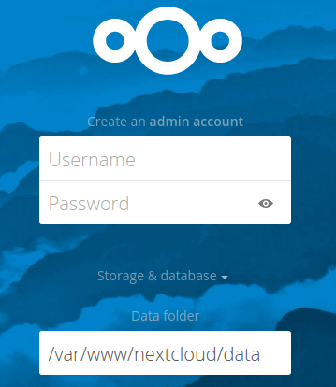
In this tutorial, we will show you how to install NextCloud on AlmaLinux 8. For those of you who didn’t know, Nextcloud is an open-source cloud server application for homes and businesses to host their files to access them from anywhere in the world using the internet. Nextcloud runs on your own server, protecting your data and giving you access from your desktop or mobile devices. You can synchronize everything between your devices and share files with others as well
This article assumes you have at least basic knowledge of Linux, know how to use the shell, and most importantly, you host your site on your own VPS. The installation is quite simple and assumes you are running in the root account, if not you may need to add ‘sudo‘ to the commands to get root privileges. I will show you through the step-by-step installation of the NextCloud private cloud storage software on an AlmaLinux 8. You can follow the same instructions for Rocky Linux.
Prerequisites
- A server running one of the following operating systems: AlmaLinux 8, CentOS, or Rocky Linux 8.
- It’s recommended that you use a fresh OS install to prevent any potential issues.
- SSH access to the server (or just open Terminal if you’re on a desktop).
- A
non-root sudo useror access to theroot user. We recommend acting as anon-root sudo user, however, as you can harm your system if you’re not careful when acting as the root.
Install NextCloud on AlmaLinux 8
Step 1. First, let’s start by ensuring your system is up-to-date.
sudo dnf update sudo dnf install epel-release
Step 2. Installing a LAMP server.
An AlmaLinux LAMP server is required. If you do not have LAMP installed, you can follow our guide here.
Step 3. Installing NextCloud on AlmaLinux 8.
Now we run the following command to download NextCloud from the official website:
wget https://download.nextcloud.com/server/releases/nextcloud-22.1.0.zip
After that, extract the file into the folder /var/www/html/ with the following command below:
unzip nextcloud-22.1.0.zip -d /var/www/html/ mkdir -p /var/www/html/nextcloud/data
We will need to change some folders permissions:
chown -R apache:apache /var/www/html/nextcloud/ chcon -t httpd_sys_rw_content_t /var/www/html/nextcloud/ -R
Step 4. Configuring MariaDB for NextCloud.
By default, MariaDB is not hardened. You can secure MariaDB using the mysql_secure_installation script. you should read and below each step carefully which will set a root password, remove anonymous users, disallow remote root login, and remove the test database and access to secure MariaDB:
mysql_secure_installation
Configure it like this:
- Set root password? [Y/n] y - Remove anonymous users? [Y/n] y - Disallow root login remotely? [Y/n] y - Remove test database and access to it? [Y/n] y - Reload privilege tables now? [Y/n] y
Next, we will need to log in to the MariaDB console and create a database for NextCloud. Run the following command:
mysql -u root -p
This will prompt you for a password, so enter your MariaDB root password and hit Enter. Once you are logged in to your database server you need to create a database for NextCloud installation:
MariaDB [(none)]> CREATE DATABASE nextcloud-db; MariaDB [(none)]> CREATE USER ‘nextcloud_user’@’localhost’ IDENTIFIED BY ‘your-strong-password’; MariaDB [(none)]> GRANT ALL ON nextcloud-db.* TO ‘nextcloud_user’@'localhost’ IDENTIFIED BY ‘your--strong-password’ WITH GRANT OPTION; MariaDB [(none)]> FLUSH PRIVILEGES; MariaDB [(none)]> EXIT
Step 5. Configuring Apache for NextCloud.
Now create an Apache virtual host for your NextCloud. First, create ‘/etc/apache/conf.d/vhosts.conf’ file with using a text editor of your choice:
nano /etc/apache/conf.d/vhosts.conf IncludeOptional vhosts.d/*.conf
Next, create the virtual host:
mkdir /etc/apache/vhosts.d/ nano /etc/apache/vhosts.d/your-domain.com.conf
Add the following lines:
<VirtualHost YOUR_SERVER_IP:80> ServerAdmin webmaster@your-domain.com DocumentRoot "/var/www/html/nextcloud/" ServerName your-domain.com ServerAlias www.your-domain.com ErrorLog "/var/log/httpd/your-domain.com-error_log" CustomLog "/var/log/httpd/your-domain.com-access_log" combined <Directory "/var/www/html/nextcloud/"> DirectoryIndex index.html index.php Options FollowSymLinks AllowOverride All Require all granted </Directory> </VirtualHost>
Save and close the file. Restart the Apache service for the changes to take effect:
sudo systemctl restart httpd.service sudo systemctl enable httpd.service
Step 6. Configure Firewall.
Allow the firewall to HTTP and HTTPS and reload it with the following commands:
sudo firewall-cmd --permanent --zone=public --add-service=http sudo firewall-cmd --permanent --zone=public --add-service=https sudo firewall-cmd --reload
Step 7. Accessing NextCloud Web Interface.
Once successfully installed, now navigate your browser to your server URL and fill up the Nextcloud setup form:
http://your-domain.com/

Finally, enter the username and password you want to register as an Admin account for NextCloud and then furnish the Database details. Last, click on the Finish Setup.
Congratulations! You have successfully installed NextCloud. Thanks for using this tutorial for installing NextCloud open-source self-hosted on your AlmaLinux 8 system. For additional help or useful information, we recommend you check the official NextCloud website.